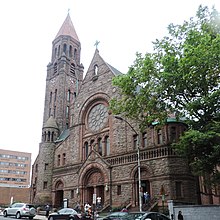
The Cathedral of the Immaculate Conception in Syracuse, New York is the mother church of the Roman Catholic Diocese of Syracuse. It is the seat of the Bishop of Syracuse, currently Douglas Lucia.
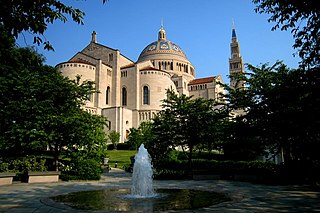
Maginnis & Walsh was an architecture firm started by Charles Donagh Maginnis and Timothy Walsh in 1905. It was known for its innovative design of churches in Boston in the first half of the twentieth century.
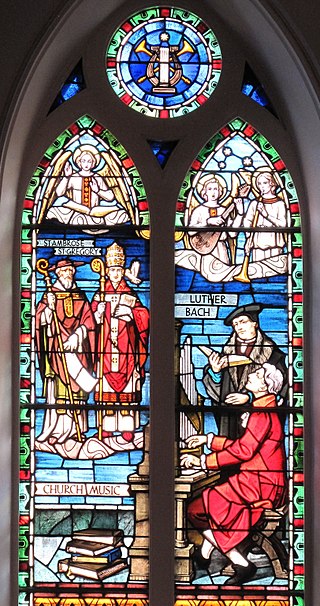
Franz Mayer of Munich is a German stained glass design and manufacturing company, based in Munich, Germany and a major exponent of the Munich style of stained glass, that has been active throughout most of the world for over 170 years. The firm was popular during the late nineteenth and early twentieth century, and was the principal provider of stained glass to the large Roman Catholic churches that were constructed throughout the world during that period. Franz Mayer of Munich were stained glass artists to the Holy See and consequently were popular with Roman Catholic clients. The family business is nowadays managed by the fifth generation and works in conjunction with renowned artists around the world.

The Cathedral of the Immaculate Conception is a Catholic Cathedral located in Camden in Camden County, New Jersey. It is the seat of the Diocese of Camden, and it was listed on the National Register of Historic Places in 2003 as the Church of the Immaculate Conception. Built in 1864, it was officially designated as a cathedral in 1937.

Patrick Charles Keely was an Irish-American architect based in Brooklyn, New York, and Providence, Rhode Island. He was a prolific designer of nearly 600 churches and hundreds of other institutional buildings for the Roman Catholic Church or Roman Catholic patrons in the eastern United States and Canada, particularly in New York City, Boston and Chicago in the later half of the 19th century. He designed every 19th-century Catholic cathedral in New England. Several other church and institutional architects began their careers in his firm.
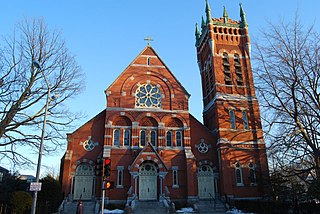
Patrick W. Ford (1847–1900) was an Irish-American architect who, along with Patrick C. Keely of Brooklyn and James Murphy of Providence, Rhode Island designed many Roman Catholic churches built in the eastern part of United States through the latter half of the 19th century.

Edwin Forrest Durang was an American architect. He kept offices in Philadelphia and specialized in ecclesiastical and theatrical design.
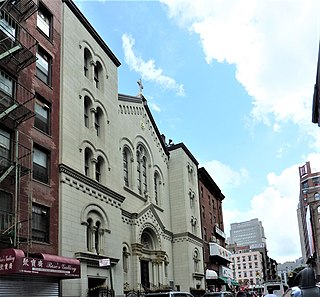
The Church of the Most Precious Blood is a Roman Catholic parish located in New York City. The parish is under the authority of the Archdiocese of New York, and is the National Shrine Church of San Gennaro. Located at 113 Baxter Street with an additional entrance on Mulberry Street, the Church of the Most Precious Blood is part of Manhattan's Little Italy neighborhood. The Most Precious Blood parished merged with Old St. Patrick's Cathedral parish, and the two churches share priests and administrative staff.
Joseph William McCarthy, AIA, was an architect in the early 20th century most famous for his work on buildings for the Roman Catholic Church. He was born in Jersey City, New Jersey, on June 22, 1884, and attended Holy Innocents School in New York City until the 8th grade. He moved to Chicago, Illinois, and graduated from St. Gabriel High School in 1901 before entering the architecture firm of Daniel Burnham, a noted Chicago architect for whom he worked eight years. He then worked for two years with British-born Chicago church architect J.E.O. Pridmore before opening his own practice in 1911.

Schickel & Ditmars was an architectural firm in New York City, active during the city's Gilded Age from 1885 until the early 1900s. It was responsible for designing many fine churches, residences and commercial buildings.

St. Henry's Catholic Church is an historic Roman Catholic church in St. Henry, Ohio, United States. Built in the late nineteenth century, it remains the home of a functioning congregation, and it has been recognized as a historically significant building because of its architecture.
Jeremiah O'Rourke, FAIA,, was an Irish-American architect known primarily for his designs of Roman Catholic churches and institutions and Federal post offices. He was a founder of the Newark-based architectural firms of Jeremiah O'Rourke and Jeremiah O'Rourke & Sons.
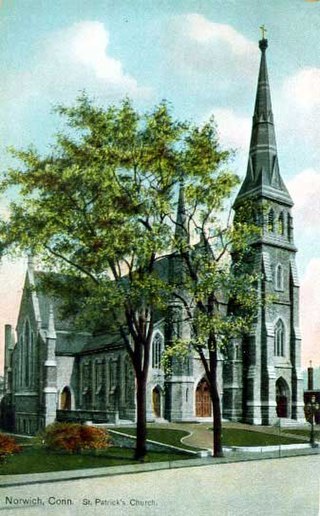
James Murphy, FAIA, (1834–1907) was an Irish-American architect active in late-nineteenth- and early twentieth-century New England, who designed numerous Roman Catholic churches and related structures.

George I. Lovatt Sr. was an American architect who designed numerous Roman Catholic churches in Eastern Pennsylvania, New Jersey, and elsewhere during the late 19th and early 20th centuries.
Robert J. Reiley, AIA, (1878–1961) was an American architect practicing in New York City in the early and mid twentieth century. He was particularly known as a designer of Catholic churches, schools, and hospitals in the Northeast USA.

Henry V. Murphy (1888–1960) was an American architect who specialized in Catholic churches and schools.
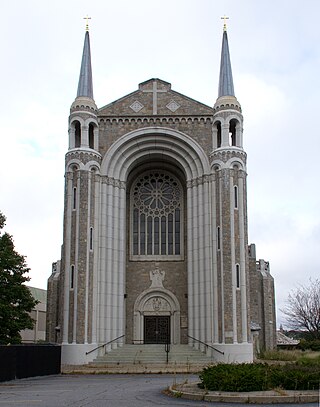
Donat R. Baribault (1885–1970) was an American architect who designed a number of Catholic churches, schools, convents and rectories in Western Massachusetts and New Hampshire.
William Peter Ginther (FAIA) was an American architect based in Akron, Ohio. He was a prolific designer of Roman Catholic churches, schools and rectories throughout Ohio, Pennsylvania, Indiana, California, Virginia and New York.
